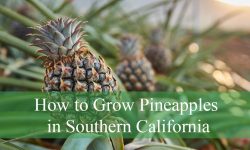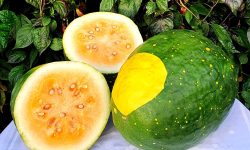In the realm of tropical agriculture, coconuts stand as icons of versatility and abundance, offering a myriad of varieties tailored to diverse climates and culinary preferences. Among the plethora of coconut cultivars, 20 types emerge as distinctive players in the global coconut landscape.
From the towering palms of the East Coast Tall to the prized sweetness of the Malayan Yellow Dwarf, each type boasts unique traits and flavors, enriching cuisines, economies, and landscapes worldwide.
Let’s embark on a journey through these 20 types of coconuts, exploring their origins, characteristics, and culinary delights.
Different Types of Coconuts
Fiji Dwarf
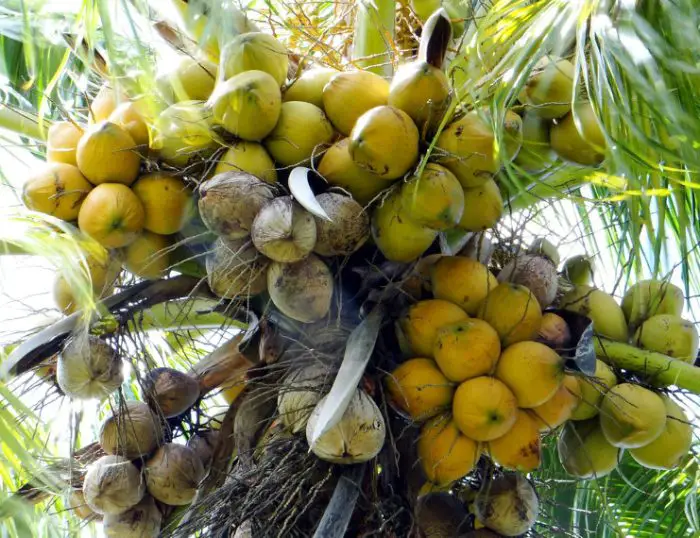
The Fiji Dwarf coconut variety is renowned for its resilience, standing strong against diseases like yellowing disease. With a maximum height of 25 feet, it’s prized for its ornamental value and delicious, firm, sweet flesh. Easily accessible fruits make harvesting a breeze. Its creamy, nutty meat enhances spring desserts, making it a favorite for culinary use. Florida residents adore its special leaf structure and numerous benefits in backyard landscapes.
King Coconut
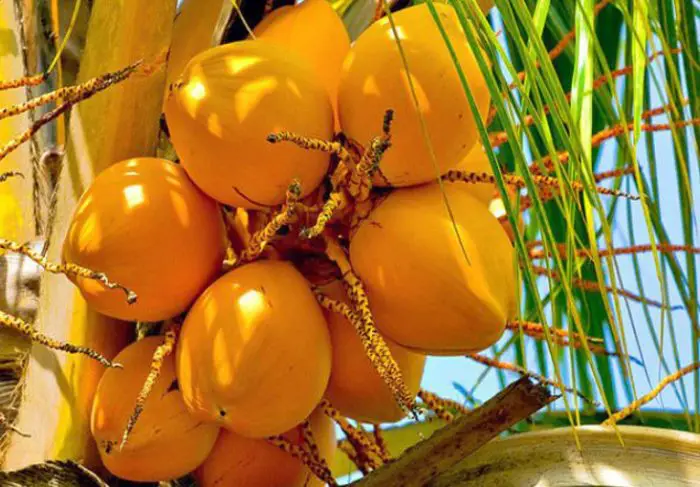
Originating from Sri Lanka, the King Coconut holds a special place in the country’s culinary tradition. Resembling a football in shape, its flesh and water are prized for their delectable taste and high nutritional value, boasting more potassium than a banana! With trees reaching about 20 feet, this variety offers a constant supply of refreshingly sweet juice, best harvested after 8 months for optimal quality.
VHC1 Coconut
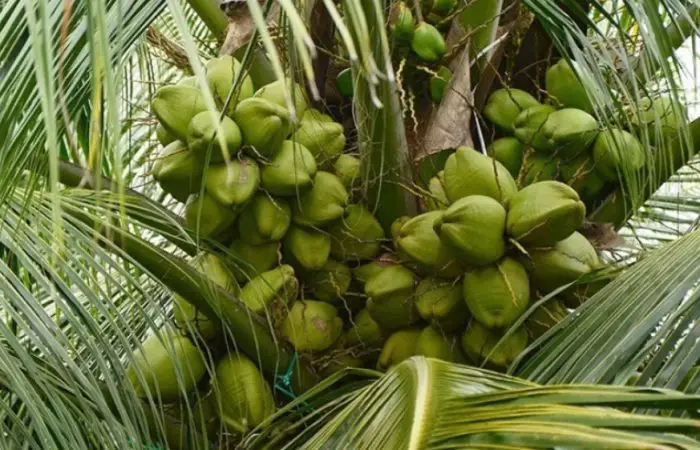
The VHC1 Coconut, a hybrid of Malayan Green Dwarf and East Coast Tall coconut, is a prolific producer, yielding significantly more coconuts than ordinary varieties. With the potential to produce between 80 to 100 coconuts annually, it surpasses the typical yield of around 50 coconuts from regular coconut types, showcasing its remarkable productivity.
Malayan Yellow Dwarf Coconut
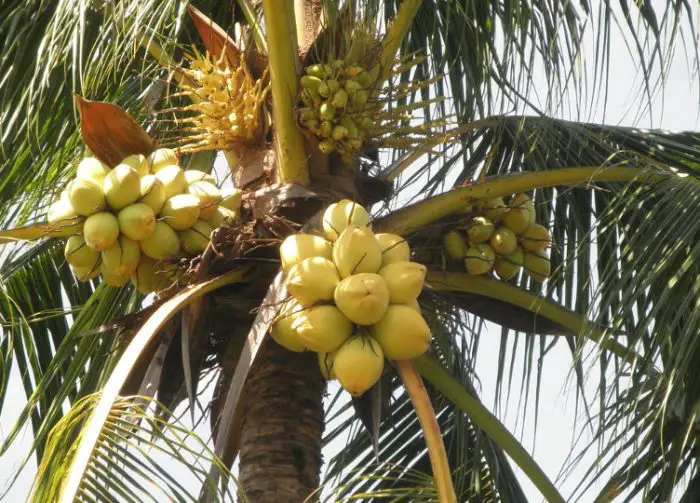
The Malayan Yellow Dwarf Coconut, originating in Malaysia in the late 1800s, thrives in tropical climates like Thailand, India, Brazil, Fiji, and Jamaica. With its oblong, medium-sized fruits initially light yellow-green, turning pale yellow as they mature, this variety, despite its “dwarf” moniker, can grow up to 50 feet tall. Renowned for its sweet, delicious meat and water, it’s prized as an easy-to-grow coconut tree.
Golden Malayan Dwarf Coconut
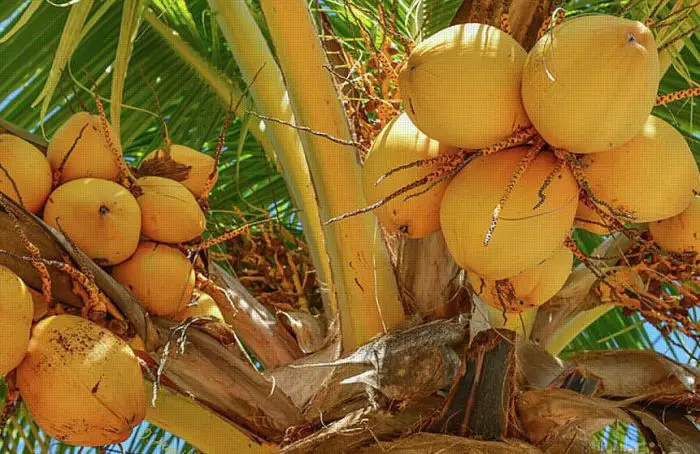
Golden Malayan Dwarf Coconut has large, orange-yellow fruit with rich flavor and moisture. Surprisingly tall for a dwarf variety, it can soar up to 60 feet. Thriving in warm climates, particularly Southeast Asia and southern Bulgaria, it yields the most delicious commercial coconut water and juice, perfect for culinary endeavors.
Green Dwarf Coconut
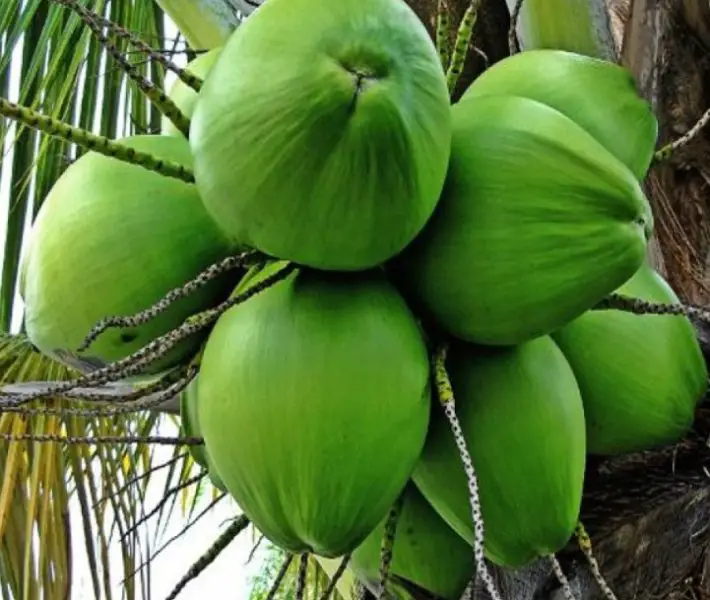
The distinct green hue sets the Green Dwarf Coconut apart, retaining its color even when ripe. Widely cultivated in Malaysia, it boasts a higher water content and tougher flesh, adhering closely to the rind. Standing at around 30 feet, it yields abundant coconut water ideal for cooking, with meat that’s equally delicious. Explore its unique characteristics and appearance firsthand!
Chowghat Orange Dwarf Coconut
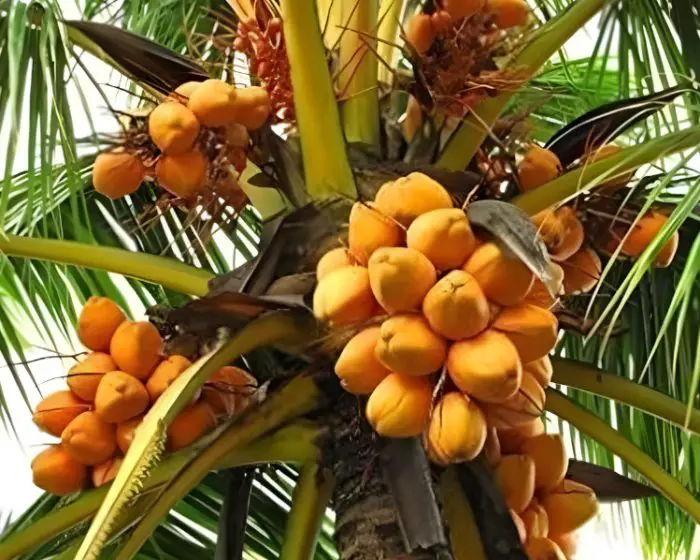
The Chowghat Orange Dwarf Coconut boasts large, stunningly orange fruits, thriving in warm climates like India. Standing at a moderate height of around 16 feet, it yields abundant fruit throughout its lifespan, providing ample meat and sweet water for culinary endeavors. Incorporate this variety into your recipes for a delightful Hawaiian-inspired twist, whether sweet or savory.
Jamaican Tall Coconut
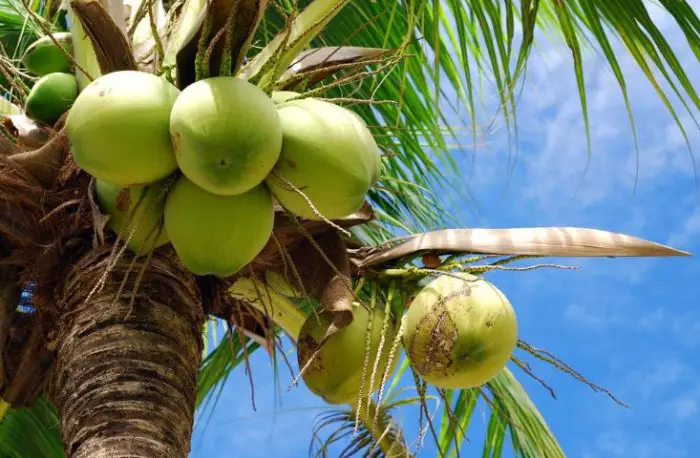
The Jamaican Tall Coconut impresses with its remarkable productivity, yielding up to 200 coconuts annually. Towering over 100 feet and boasting a lifespan of up to 80 years, its fruits offer fresh and flavorful juice and flesh. Ideal for crafting delectable Caribbean-style desserts, this variety, although originating from Jamaica, thrives in regions like Florida and Latin America, making it a superb choice for neighborhoods or businesses.
Panama Tall Coconut
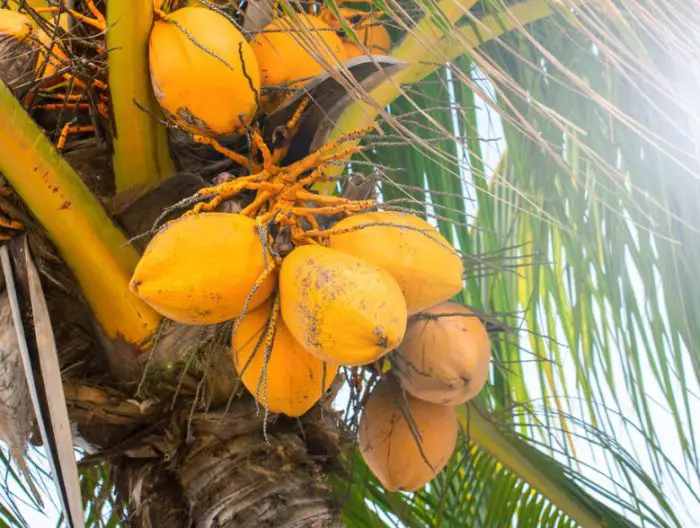
The resilient Panama Tall Coconut thrives in regions with temperatures ranging from 60 to 70°F, enduring even the fiercest storms. While slightly shorter at 90 feet, its fruits offer pleasantly sweet flesh and water. Though not as prolific as other varieties, its yield is ample for personal use, making it a reliable choice for coconut enthusiasts.
Chandrakalpa Coconut
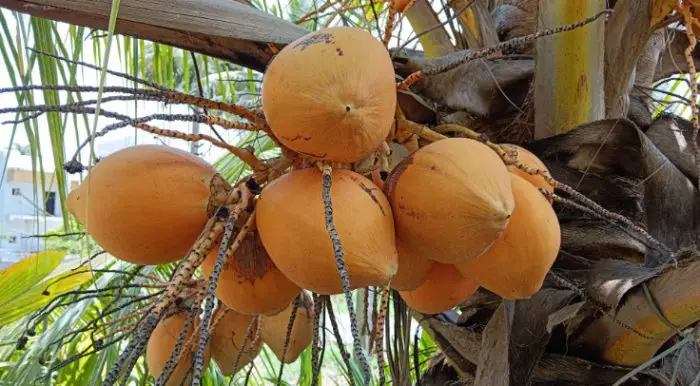
The Chandrakalpa Coconut impresses with its rapid fruit production, yielding over 100 nuts annually. Thriving in diverse conditions, it tolerates various soils and weather patterns effortlessly. Ideal for making pressed coconut water, this variety is favored for its suitability in crafting this special extract, readily available in commercial form at grocery stores.
Macapuno Coconut
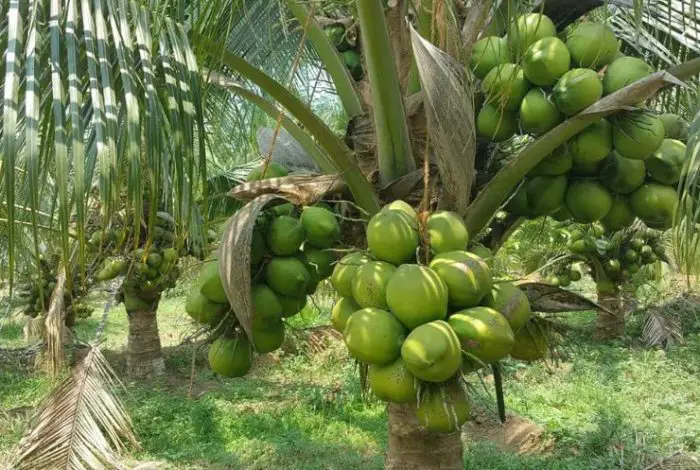
Macapuno Coconut thrives in tropical climates, originating from the Philippines. Known for a genetic mutation, it yields dry coconuts with minimal water content, resulting in sweeter, nuttier flesh. Its translucent, firm yet soft texture resembles jelly, making it perfect for crafting macapuno candies, jellies, and jams. Explore the unique characteristics setting Macapuno coconuts apart from ordinary varieties!
East Coast Tall Coconut
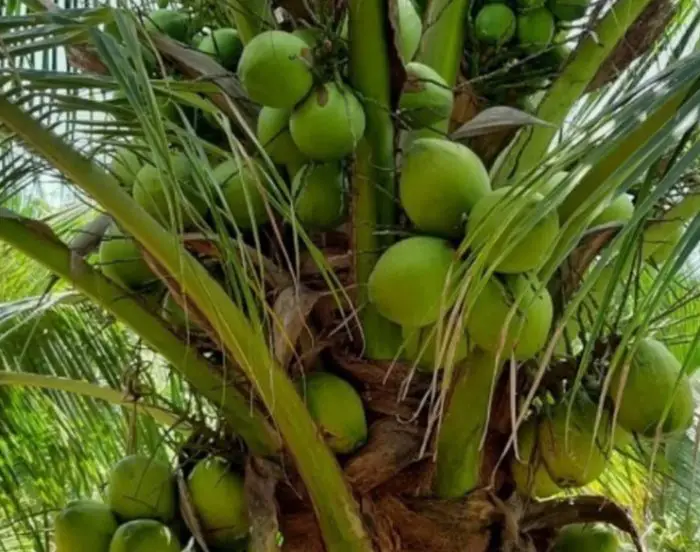
The East Coast Tall Coconut is a popular variety yielding 60-70 nuts annually. Towering at 90 feet, it requires ample space and full sunlight for optimal growth. With large, water-rich fruits in vibrant shades of green, it’s resistant to various pests and boasts 64% oil content. Thriving in red and deep sandy loam soils, it’s a prized choice for coconut enthusiasts.
Chandra Laksha
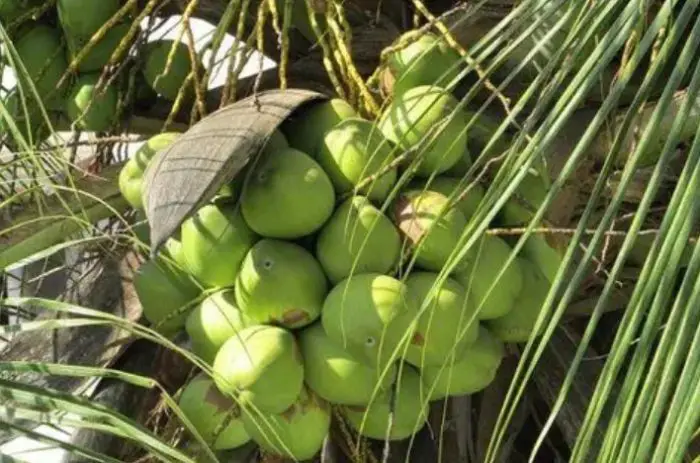
Chandra Laksha, a hybrid of West Coast Tall and Chowghat Orange Dwarf coconut, is extensively cultivated in Kerala, Tamil Nadu, and Karnataka. Known for its high yield, it produces up to 115 coconuts annually, with fruits containing 68% oil content.
Lakshaganga
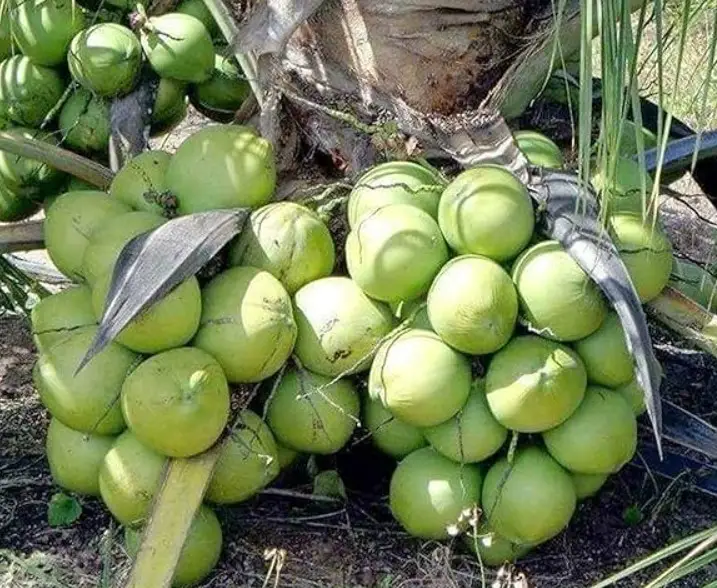
Lakshaganga, a hybrid of Lakshadweep Ordinary and Gangabondam Green Dwarf coconut, begins fruiting 4 to 5 years post-planting. Resilient to diverse weather conditions, it thrives in various environments. Offering around 100 coconuts annually, its fruits contain approximately 70% oil content, making it a productive choice for cultivation.
West Coast Tall Coconut
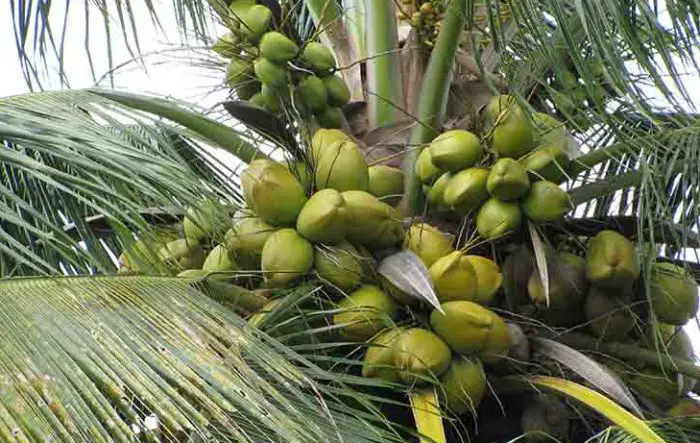
The versatile West Coast Tall Coconut thrives in various soils, yielding approximately 80 coconuts annually, abundant in cooking water. Known for its high oil content, it’s perfect for producing coconut oil. Use it as a shortening substitute in recipes for added richness and versatility, elevating a wide range of dishes with its distinct flavor.
Maypan Coconut
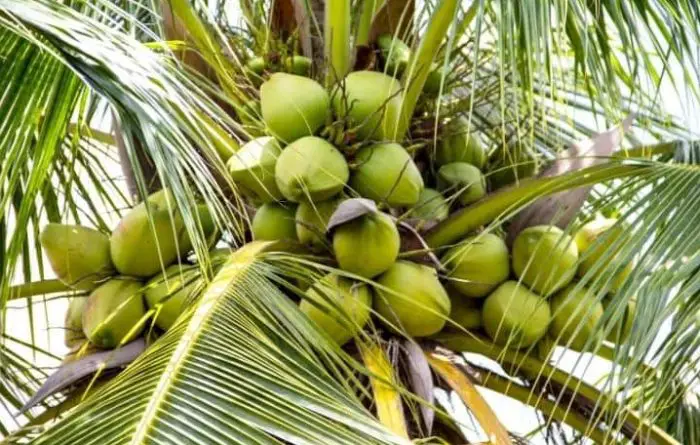
Maypan Coconut, a Jamaican hybrid of Panama Tall and Malayan Dwarf, excels in disease resistance and resilience against harsh weather conditions. With an average height of 50 feet, it’s considered medium to large-sized and thrives in temperatures around 40°F or higher.
Tiptur Tall Coconut
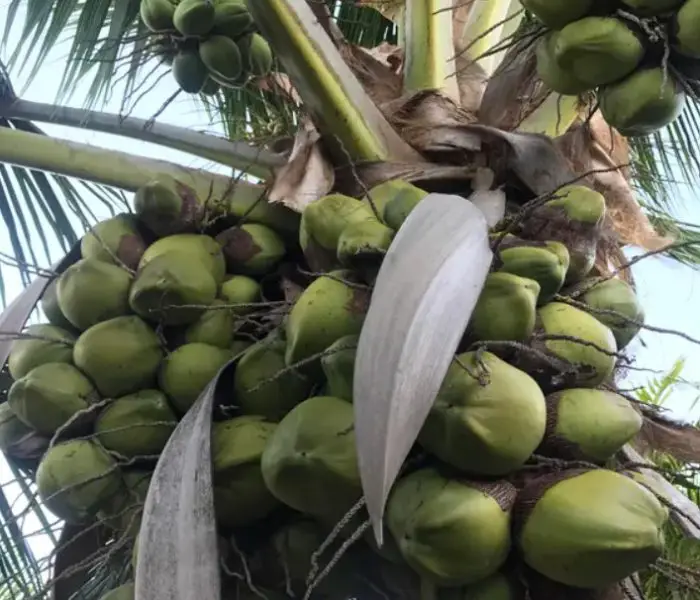
Tiptur Tall Coconut, esteemed for its traditional attributes, offers regular water and meat within its fruits, yielding 70 to 80 nuts annually. However, it lacks resilience against diseases and harsh weather conditions, making it susceptible to damage.
Kera Sankara
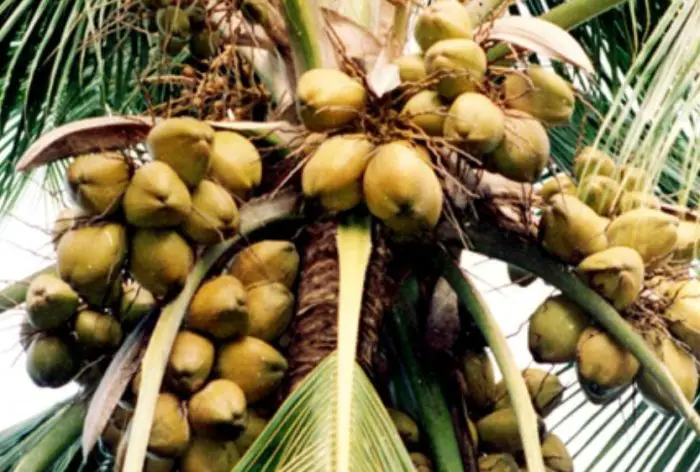
Kera Sankara, a coconut hybrid of Lakshadweep Ordinary Tall and Chowghat Orange Dwarf, boasts a high oil content ranging from 68 to 72%. Versatile in growth, it thrives in both rainfed and irrigated conditions, offering flexibility for cultivation.


